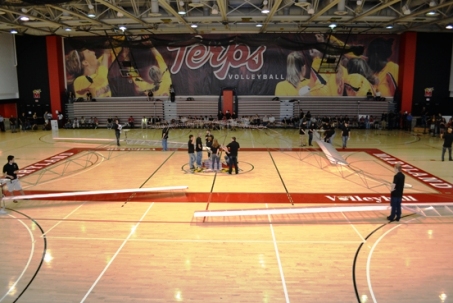Engineering students and faculty at the University of Maryland in College Park are close to hovering a 31m (103ft)-wide ultra-light human-powered helicopter in preparation for record attempts and the $250,000 Sikorsky prize for human-powered helicopter flight.
During pre-flight tests on 11 May, graduate student Judy Wexler pedalled with feet and hands through a 6.6:1 gearing system to power each of the four 13m, 3.2kg (7lb) rotors as fast as 16rpm, resulting in about 0.2kN (50lb) of thrust to each.
Officials will try on 12 May to get the 94kg craft (49kg for Wexler; 46kg for the vehicle) to reach its design altitude of 0.3m to set one or more world records.
 |
|---|
©John Croft |
Kristin Maynard, of the National Aeronautics Association contest and records board, was here at the University’s College Park Campus to witness the test, but noted that the demonstration was not an official attempt to set a record as the test area had not yet been surveyed. According to Maynard, No official record exists with the FAI, the World Air Sports Federation, for endurance (time off the ground) or endurance in a hover (a flight that reaches at least 9.8ft altitude (3m) and stays within a 10m (33ft) box).
The endurance in a hover award coincides with the requirements of the Sikorsky award, offered by the company in 1980 and as of yet, unclaimed. Several attempts have been made at human-powered helicopter flight and at least two have been successful. The longest aloft, in Japan, reached an altitude of 7.9in (20cm) for 19.46 sec, but neither flight was officially recorded, says Maynard.
Source: FlightGlobal.com
















